Which essay elements build academic conclusions?

This is the second of three chapters about Writing Concluding Paragraphs. To complete this reader, read each chapter carefully and then unlock and complete our materials to check your understanding.
– Review the purpose of concluding paragraphs
– Explore the four key concluding elements in depth
– Include examples of each element to help guide the reader
Before you begin reading...
-
video and audio texts
-
knowledge checks and quizzes
-
skills practices, tasks and assignments
Chapter 2

In Chapter 1 of this short reader on concluding paragraphs, we discussed the purpose of finishing an essay with a carefully crafted conclusion and highlighted the importance of getting this final paragraph just right. Leave a good last impression on your readers and they should recall the rest of your essay more fondly. In Chapter 2, we now turn our attention to the four common concluding elements, namely the thesis restatement, summary of ideas, research gaps and recommendations. Not all conclusions have to have these four elements, but those that have at least two or three are more likely to succeed.
Element 1: Thesis Restatements
The thesis restatement of a conclusion is much like the thesis statement in the introduction of an essay in that it introduces the essay’s topic and the writer’s stance, often outlining also the key main ideas explored in the body section:


A thesis restatement then is a paraphrase of the original statement in that it uses different words (such as synonyms) or word orders and grammar to express the same ideas. Notably, the tense and aspect of these two corresponding statements should also be different to reflect the different stages of the essay, with the original statement often being present simple and the restatement being present perfect.
However, a good thesis restatement should not only paraphrase the original as in the previous example. In addition to using different words and grammar, a thesis restatement should also demonstrate a deeper understanding of the topic:
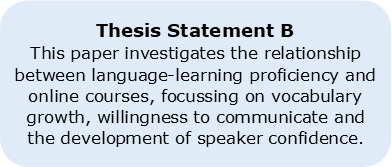
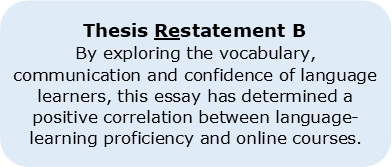
Element 2: Summary of Ideas
Following the thesis restatement, most students are then advised to add a brief summary of ideas to their conclusion. In short, this is when the reader is reminded of the main ideas presented in the topic sentence of each body paragraph, including also of some of the most salient supporting details:
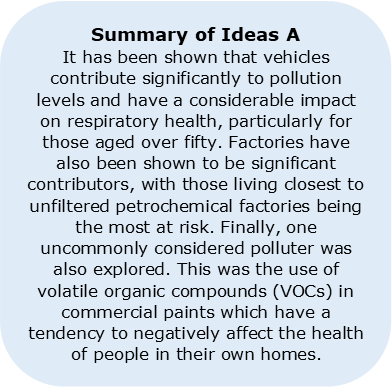
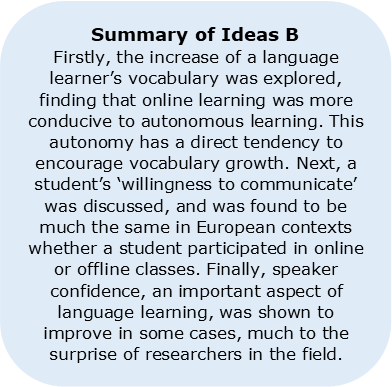
One error that many students make when constructing this element, however, is that they try to introduce new claims or evidence and this is rarely appropriate or recommended in a conclusion. The conclusion should simply remind the reader of what was introduced in the introduction and debated in the body section of the essay, tying these elements together as best as possible with a shared them. There is no room to provide supporting information for any new main ideas in a conclusion and doing so will likely only confuse your reader and ultimately lower your grade.

Element 3: Research Gaps
Next are research gaps, which are generally more necessary in longer essays than in shorter ones – as this is where the writer concedes to flaws or limitations in their (often primary) research. It is important that students remember to consider the scope of every essay they write. Some students attempt to complete a master’s sized dissertation in their bachelor’s degree for example, or choose a topic that has PhD thesis scope during an undergraduate degree. Consider what can and cannot be achieved in an essay by judging its length and academic level, and inform the reader concisely and clearly of which avenues must still be investigated before a solid conclusion can be reached:
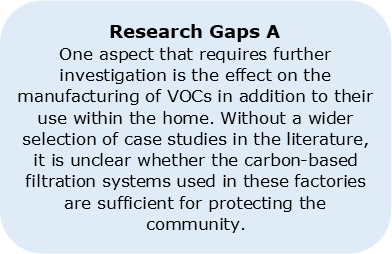

Research gaps are particularly useful for researchers because they provide ideas for original research, which is a key aspect of master’s, PhD and post-doctoral research.
Element 4: Recommendations
Finally, a student at an English-speaking university may wish to instead include recommendations – perhaps as well research gaps. Again, the inclusion of this element depends on the topic and type of essay, as problem-solution and cause-and-effect essays, for example, tend to be particularly reliant on recommendations during an essay’s conclusion. In addition to offering recommendations, this element may also offer solutions to the problems or situations mentioned in the body of an essay or predictions for what might happen next.

Whatever the focus, all types of recommendation should be considered carefully. They should be achievable, reasonable and implementable, and students should make sure to include at least one or two evaluations of these recommendations to demonstrate critical thinking:


In addition to these four key elements, students shouldn’t forget to close their conclusions with something memorable. Try to craft a final sentence which is positive (without being emotive), which points your reader towards a new, unique view of your topic, and which reiterates the importance of your ideas and the purpose for reading the essay:
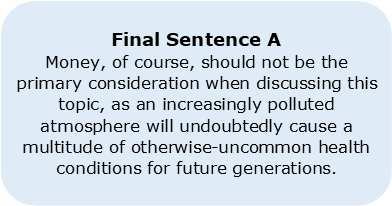
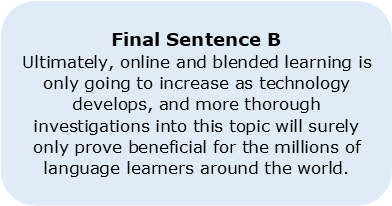
To reference this reader:
Academic Marker (2022) Writing Concluding Paragraphs. Available at: https://academicmarker.com/essay-writing/concluding-paragraphs/writing-concluding-paragraphs/ (Accessed: Date Month Year).
Downloadables
Once you’ve completed all three chapters in this short reader Writing Concluding Paragraphs, you might then wish to download our Chapter Worksheets to check your progress or print for your students. These professional PDF worksheets can be easily accessed for only a few Academic Marks.
Chapter 1 explores the topic: What is the purpose of a concluding paragraph? Our Chapter 1 Worksheet (containing guidance, activities and answer keys) can be accessed here at the click of a button.
Chapter 2 explores the topic: Which essay elements build academic conclusions? Our Chapter 2 Worksheet (containing guidance, activities and answer keys) can be accessed here at the click of a button.
Chapter 3 explores the topic: What are 10 tips for writing effective conclusions? Our Chapter 3 Worksheet (containing guidance, activities and answer keys) can be accessed here at the click of a button.
To save yourself 2 Marks, click on the button below to gain unlimited access to all of our Writing Concluding Paragraphs Chapter Worksheets. This All-in-1 Pack includes every chapter, activity and answer key related to this topic in one handy and professional PDF.
Collect Academic Marks
-
100 Marks for joining
-
25 Marks for daily e-learning
-
100-200 for feedback/testimonials
-
100-500 for referring your colleages/friends